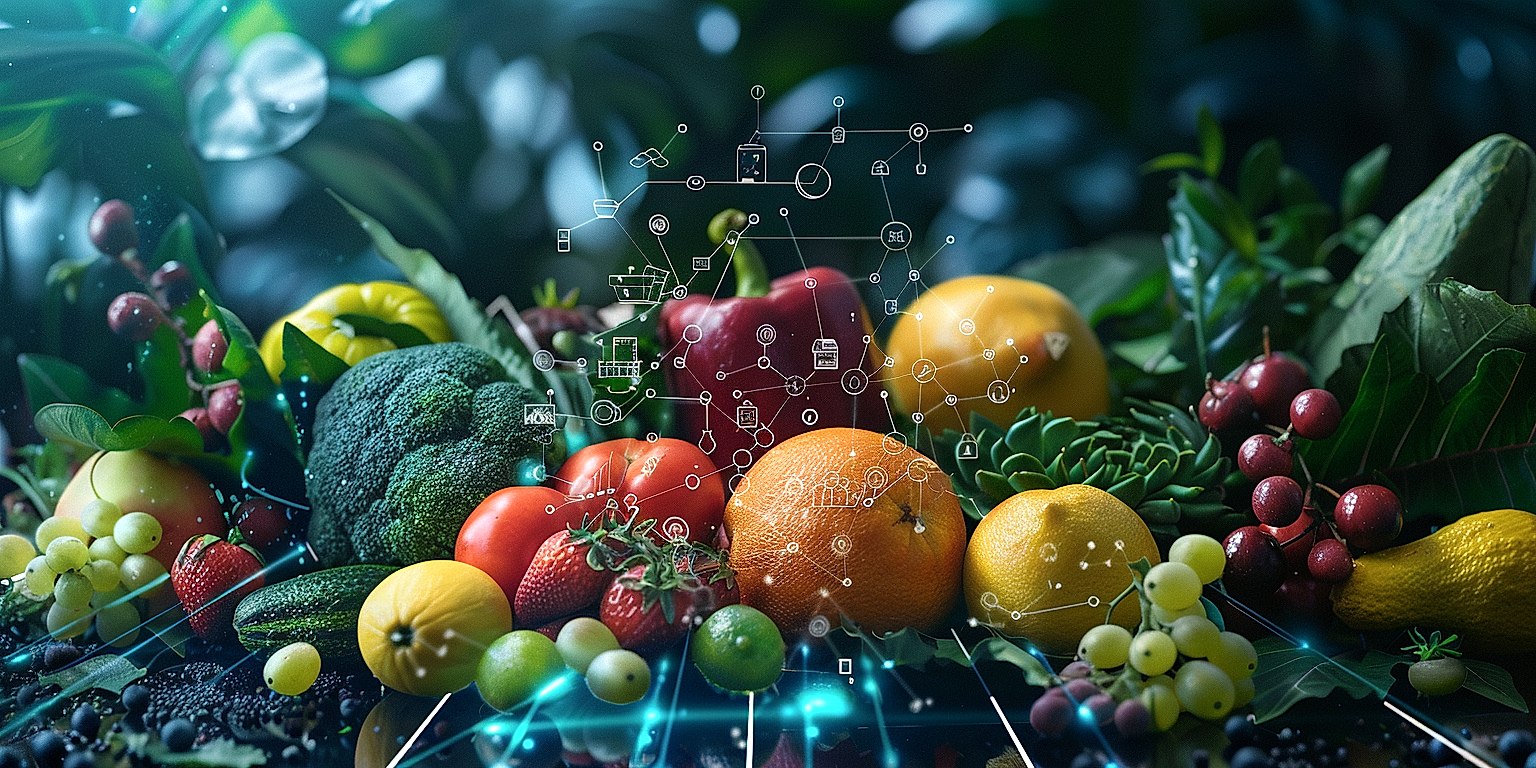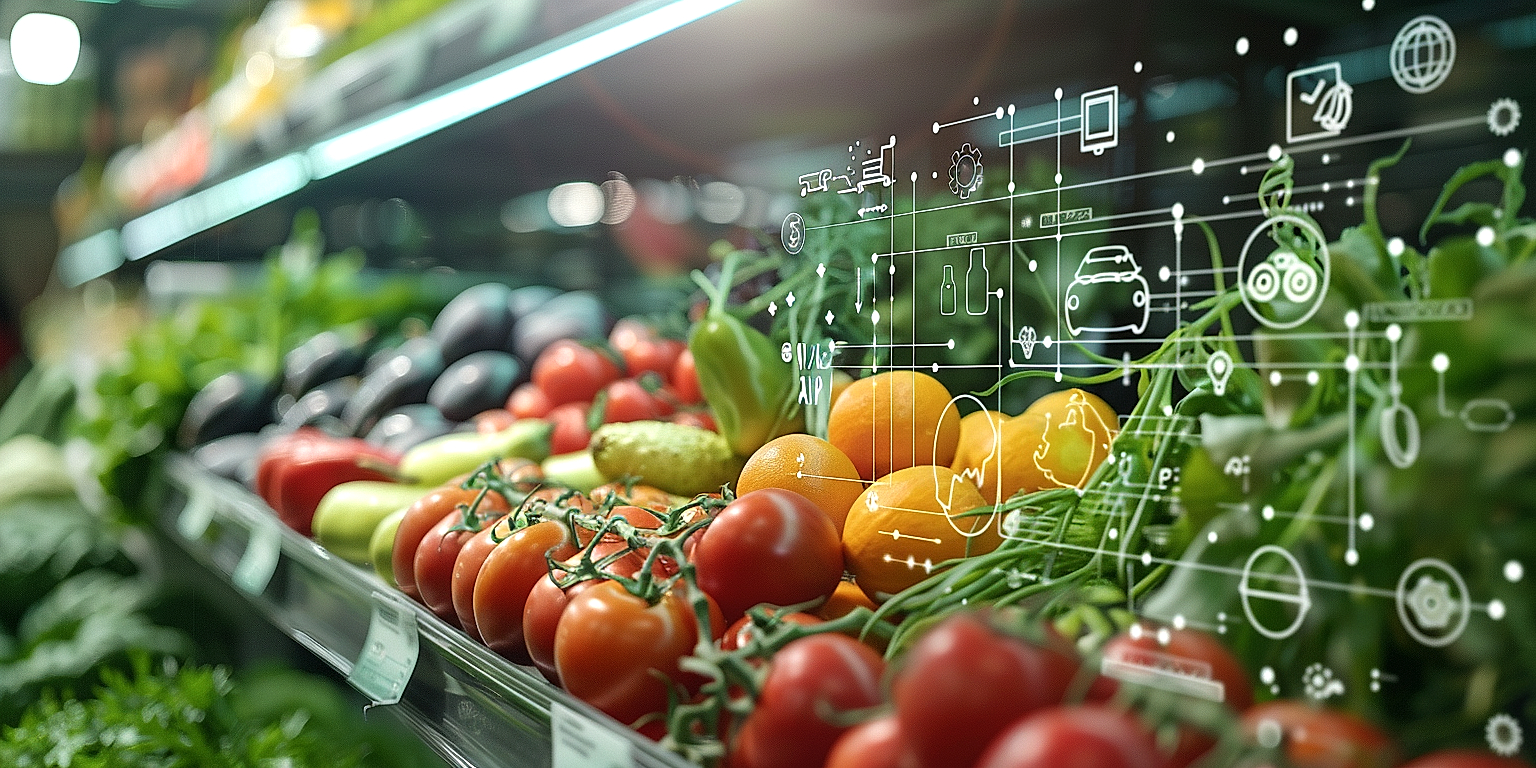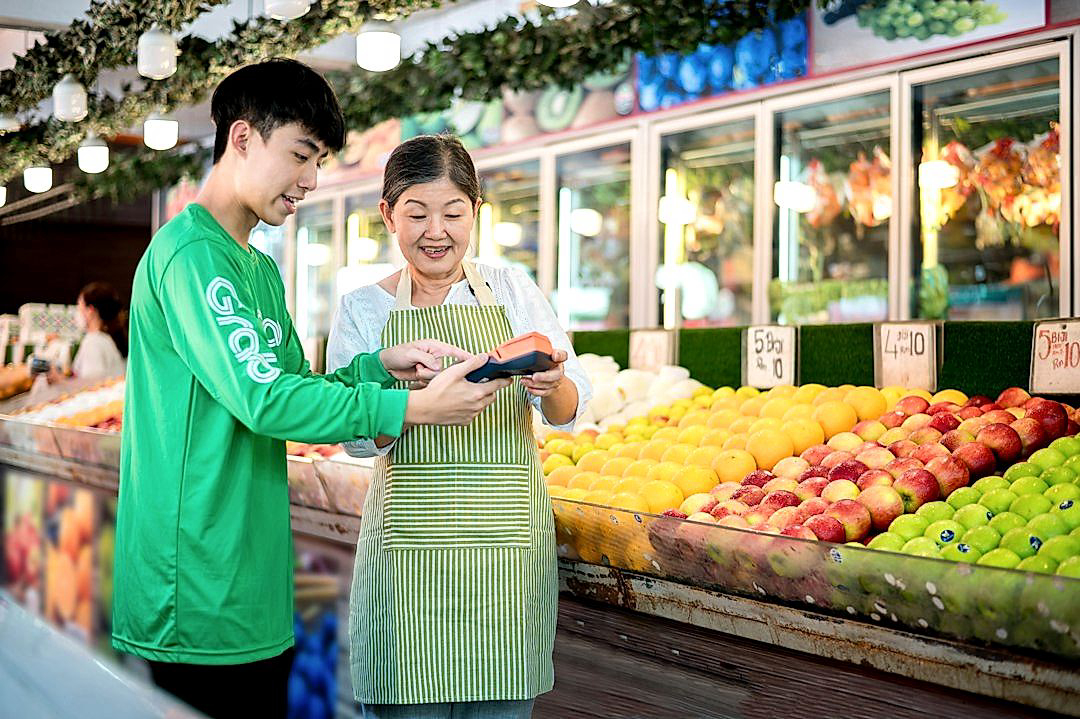Effective management of inventory is a cornerstone for success in the field of produce retail.
Streamlining this process has been a priority for many, especially considering the perishable nature of these goods.
Thankfully, in recent years, a wave of new technologies has been revolutionizing the sector.
Digital tools are now an integral part of inventory management, reshaping the way retailers operate.
From predictive analytics to inventory tracking, these advancements are drastically improving accuracy and efficiency.
In this blog post, we will delve into these urbane, transformative solutions that are redefining retail practices.
Technologies Transforming Inventory Management In Produce Retail
1. Real-Time Stock Tracking Software
The advent of Real-Time Stock Tracking Software has made a significant impact on the inventory management landscape in the produce retail sector.
This technology is pivotal in providing instantaneous updates on stock levels and product movements, enabling retailers to keep a close eye on their inventory.
Such continuous monitoring can aid in quickly identifying stock shortages, helping retailers to replenish them on time to prevent potential sales losses.
Real-Time Stock Tracking Software provides a constant, precise view of inventory status, playing a crucial role in the business decision-making process.
Moreover, real-time tracking systems can significantly minimize the level of manual work and human error, which often lead to inventory discrepancies.
These systems provide detailed insights into product demand patterns, helping retailers in efficient stock planning and forecasting.
Artificial Intelligence (AI) and machine learning algorithms can be integrated into these software applications to predict future stock requirements based on historical data.
These predictive analytics, underpinned by real-time tracking systems, can help retailers to avoid overstocking and understocking scenarios.
Understocking can lead to missed sales opportunities, whereas overstocking can increase storage costs and can cause wastage, particularly in the case of perishable items like fresh produce.
An effective real-time inventory tracking solution can automate the inventory management process, providing precise control over the retail business operations.
Software with barcode and RFID technology can make the tracking process more efficient by allowing quick, easy, and accurate stock count.
Different retailer sizes or types, such as grocery chains or small organic produce retailers, can benefit from this technology, as it can be tailored according to their specific inventory management needs.
The Real-Time Stock Tracking Software can also help create a better shopping experience for customers by ensuring the availability of fresh produce when they need it.
Investments in real-time inventory tracking systems can be a competitive differentiator for produce retailers in the crowded retail market.
However, the implementation of a real-time tracking system requires strategic planning, especially choosing the right technology provider and ensuring seamless integration with existing systems.
To wrap, the Real-Time Stock Tracking Software has revolutionized inventory management in produce retailing by offering automated, fast, and accurate tracking methods that ensure cost savings and improve customer satisfaction.
2. AI/Machine Learning Inventory Predictions
One of the most impressive transformations in produce retail inventory management is courtesy of AI and Machine Learning.
These technologies have brought about more accurate means of predicting inventory needs, and plays a major role in avoiding overstocking or understocking situations.
AI, or Artificial Intelligence, equips machines with cognitive capabilities to mimic human intelligence, thus making complex decisions possible.
Machine Learning, a subset of AI, involves the scientific study of algorithms and statistical models that computer systems utilize to perform tasks without explicit instructions, relying on patterns and inference instead.
When integrated with inventory management in produce retail, AI and Machine Learning can significantly lower cost, minimize waste and improve customer satisfaction through intelligent inventory predictions.
This ability to predict with a high degree of accuracy what produce will sell and when, helps retail businesses avoid the costly mistake of overbuying perishable goods.
Taking into consideration the seasonal, weekly and even daily trends that affect consumer behaviour, these intelligent systems can forecast future sales, subsequently aligning inventory purchases with the predicted demand.
As fresh produce has a short shelf life, accurate inventory predictions are pivotal for avoiding spoilage and waste, thereby enhancing sustainability in the retail sector.
Moreover, these AI-powered prediction models can even consider unexpected variables like weather patterns and holidays which directly impact buying habits.
For instance, an AI system could learn from the past trends that sales of certain fruits tend to spike ahead of a hot weekend or sales of certain vegetables increase during holiday seasons and factor in these nuances into future inventory predictions.
Additionally, AI and Machine Learning can help manage potential distribution disruptions, accelerating decision-making and ensuring continuous stock availability.
They enable the running of multiple scenarios, in real-time, to identify the most efficient ways of fulfilling stock under varying conditions.
This innovative technology not only improves the productivity and efficiency of inventory planning, but also takes away much of the guesswork, reducing human error and bias.
While AI and Machine Learning sound futuristic, these technologies are already applied practically in retail businesses and proving to be a game-changer in the way inventory is managed.
Indeed, the integration of AI and Machine Learning into inventory management indicates a positive direction towards smarter and more sustainable retail operations.
3. Automated Replenishment Systems
Automated replenishment systems are a revolutionary technology that is transforming the world of inventory management in produce retail.
They streamline the restocking process, thereby minimizing chances of human error and ensuring that shelves are always well-stocked.
One of the unique features of these systems is that they can predict the optimum quantities of different items a store needs to order, given the sales pattern.
This essentially leads to more efficient inventory management and significantly reduces waste.
Moreover, automated replenishment systems ensure continuous inventory monitoring, which in turn reduces the chances of stock-outs, thereby increasing customer satisfaction levels.
They are equipped with state-of-the-art technology that can accurately calculate inventory turnover rates and generate real-time reports to assist in decision making.
As produce retail is highly perishable, these systems can help retain the freshness of the items by restocking them in a timely manner.
Automated replenishment systems also lead to significant cost reductions as they require less manual labor and avoid overstocks.
Another impressive attribute of these systems is their flexibility as they can easily be integrated with other technologies.
The data collection and integration abilities of these systems can help produce retailers to collaborate with their suppliers more effectively.
By doing so, both parties can benefit from the trade as suppliers get a clearer idea about the demand, and retailers have a better understanding of the supply chain.
Note that implementing automated replenishment systems is not a one-off thing, but it is rather an ongoing process that requires consistent monitoring and updates.
This ensures the system’s efficiency, maintains accuracy and increases its adaptability to the changing business environment.
Automated replenishment systems are, thus, undoubtedly, a potential game-changer in the arena of inventory management in produce retail.
With the ever-evolving technology, they are only expected to become more advanced and efficient in the future.
Despite the initial investment costs, the return on investment from these systems in the long run is incredibly high.
4. IoT Devices for Cold Chain Monitoring
Integrated with the advanced Internet of Things (IoT) technology, cold chain monitoring devices can track and maintain the optimum temperature required for perishable goods throughout the entire supply chain process.
These devices act as temperature sensors, consistently checking and providing updates on temperature fluctuation which can affect the quality and safety of the produce in retail inventory.
Utilizing real-time and predictive data, these smart devices help avoid spoilage of produce by alerting the retailer about potential temperature deviations.
As effective tools in inventory management, IoT devices for cold chain monitoring work to ensure the integrity of your perishable goods while reducing waste and loss.
Every sensor in each device includes a unique identifier, allowing traceability of individual items or lots of produce.
Advanced analytics provided by these IoT devices aid in decision making, helping detect patterns and predict potential issues before they arise.
By enabling remote monitoring, these devices allow retailers to track and control cold chain conditions even from far-off locations.
They greatly contribute to transforming inventory management in produce retail by fostering transparency, accuracy, and efficiency in operations.
IoT devices in cold chain monitoring can also be integrated with other technologies such as Blockchain for enhanced transparency and integrity in the supply chain.
To ensure continuous operation and management, these IoT devices come equipped with features like low energy consumption and long-lasting batteries.
IoT devices are also being developed with advanced features like humidity control, gas level monitoring and light detection, for comprehensive monitoring of produce.
Through the use of automated alerts, these devices not only detect anomalies but also warrant immediate actions to fix the issues that could compromise the quality of products.
These devices are designed to be compatible with different types of inventory management systems, providing hassle-free integration into your existing retail set-up.
With IoT devices for cold chain monitoring, retailers can achieve improved product freshness, customer satisfaction and ultimately, revenue increase.
The future of IoT in cold chain monitoring looks promising with evolving technologies like 5G and AI, envisioning a future where more intelligent, interconnected and efficient cold chain management is possible.
5. Blockchain Technology for Product Transparency
Bringing product transparency to its peak, the revolutionary Blockchain technology is an asset to inventory management in the world of produce retail.
While Blockchain is largely known for being the underlying technology for cryptocurrencies, its use in providing secure and unchangeable data carries a vast range of applications, including inventory management.
Blockchain functions as a decentralized ledger on which each transaction of every single produce can be recorded, keeping track of its movement from the farm right to the retail shelf.
Thus, Blockchain provides an absolute traceability of all transactions, answering questions about the produce’s origin, its processing, its transportation, and more, thereby displaying the whole journey of the produce.
This technology empowers the retailers by providing them with the necessary tools to ensure their produce is genuine and matches the quality promised to consumers.
Each stakeholder involved in the process from the farmer to the consumer can access the information stored in Blockchain, building trust in the system.
Further, it promotes a new level of authenticity as information once entered onto the Blockchain cannot be altered undetected, preventing tampering and fraud.
With this transparency, manufacturers and retailers can ensure that their supply chains are compliant with all regulations at every point in the journey.
Moreover, Blockchain technology can help to mitigate risk by giving retailers the foresight needed to address any potential issues that may occur throughout the product’s lifecycle.
Hence, the level of visibility that Blockchain provides over the entire supply chain is unparalleled and revolutionary for tracking inventory.
Not only is this a boon for customer trust and satisfaction, but it also furthers sustainable practices by promoting accountability and reducing wastage.
Using Blockchain for produce tracking can potentially do away with paper trails, thereby increasing efficiency and providing real-time updates.
As each entry is typically confirmed by multiple nodes on the network, Blockchain decreases the likelihood of human error and increases security.
Overall, Blockchain technology is transforming inventory management in produce retail by bringing in unparalleled transparency, reducing discrepancies, and building a trust-based model that benefits everyone in the supply chain.
6. Augmented Reality for Stock Visibility
Augmented Reality (AR) is a revolutionary technology that superimposes computer-generated images onto our view of the real world, thereby enhancing what we see, hear, or feel.
In the context of inventory management in produce retail, AR can significantly transform the way inventory is viewed and managed.
One of the practical ways AR can be used in inventory management is through real-time visualization of stock.
By simply holding up a mobile device or wearing AR glasses, a retailer can see the exact amount of stock on the shelves.
[p> Not only the quantity, but AR can also show essential details about the stock such as expiry dates, price, and sourcing information.The AR technology in retail thus eliminates the need for manually checking stock and helps in maintaining accurate inventory records.
The ability to visually access critical information about the inventory in a matter of seconds can greatly reduce errors and save retailers significant time and effort.
In the case of large produce retailers, AR can drastically improve the efficiency of the picking process.
With AR-enabled devices, the staff can quickly locate and pick items for dispatch without having to scour through aisles or refer to paper-based lists.
This not only makes the process faster but also reduces the chances of mistakes in order picking.
In addition, AR allows for immediate identification of inventory discrepancies and provides a visual representation of the stock, which can assist in noticing patterns and trends.
Such data-driven insights can be invaluable in optimizing inventory levels and thereby improving overall retail operation efficiency.
Moreover, AR also allows customers to interact with products virtually before making a purchase.
This can help enhance customer experience and build brand loyalty.
Finally, the integration of AR with other technologies such as blockchain and IoT can further enhance its effectiveness in inventory management.
For instance, AR can be used to visually represent data captured through IoT sensors or provide transparency about a product’s journey captured through blockchain.
The potential applications and benefits of AR in inventory management in produce retail are vast and largely unexplored, making it one of the most promising technologies in this domain.
7. RFID and Barcode Technology in Tracking
The application of RFID and Barcode Technology has brought about a revolutionized change in inventory management in produce retail.
Notably, the RFID (Radio Frequency Identification) technology uses radio waves to capture and read information stored on a tag attached to an object.
Unlike barcodes, these tags don’t need to be within the line of sight of the RFID reader.
RFID tags drastically improve the efficiency and accuracy of inventory tracking
They contain electronically stored information that can be read even from several feet away.
Moreover, RFID tags could be embedded inside an object and are, thus, less prone to wear and tear.
They make it possible to automatically and remotely track inventory, fully removing the human factor and its potential for error.
On the other hand, Barcodes are represented by a series of parallel, adjacent bars and spaces.
While both are used for automated data capture, they differ in their mode of operation, functionality, readability, and more.
Barcodes, for instance, are a more cost-effective solution for basic inventory tracking and need to be scanned one by one, unlike RFID tags.
They require a proper line of sight between scanner and code, plus are easily damaged, affecting their readability.
However, the use of RFID in combination with Barcodes presents a technology mix that instigates a more holistic approach in inventory management.
While barcodes provide unique identification for each product, the RFID tags facilitate automatic and remote tracking.
This combination allows an immediate detection of out-of-stock, expired, or misplaced items in a produce retail setting.
Hence, in a nutshell, RFID and Barcode technology have completely transformed how inventory monitoring and tracking are carried out boost overall efficiency.
Through these technologies, the entire supply chain process, right from the stock arriving in the warehouse till it is sold to the end user, can be monitored and analyzed leaving minimal scope for discrepancies.
The Bottom Line
The transformative power of technology in inventory management is clear.
Real-time tracking software, AI, machine learning, automated replenishment systems, and IoT devices are revolutionizing the approaches to stock control – enhancing performance, reducing errors and saving costs.
Moreover, the integration of blockchain technology and the use of Augmented Reality can bring more improvements in supply chain transparency and stock visibility.
Lastly, innovative tracking solutions like RFID and Barcode technology continue to provide reliable, time-tested support for efficient inventory management.
As these digital innovations continue to evolve, businesses must strategically adopt and adapt these tools to remain competitive, achieve higher efficiency, and ultimately, drive growth and profitability.




